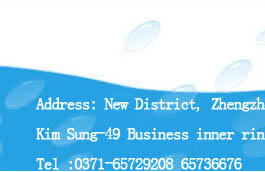Pharmaceutical water is usually produced by distillation, ion exchange, RO or other reasonable technologies, and there is not addtives in the permeate water at all..
We usually use the following three technologies to produce purified water:
Two stage RO
One stage RO + mixed bed(demineralization)
One stage RO + EDI
One Stage RO
Natural osmosis occurs when a semi-permeable membrane separates two fluids of different salinity. The fluid with the lower salinity will pass through the membrane until the salt solution becomes equal on both sides of the membrane.
Reverse osmosis (RO)is the reverse of normal osmosis process,it occurs when the water is forced by pressure from higher salinity solution to permeated water side across a semi-permeable membrane,the memebrane allows the passage of water, but not impurities, organics, ions etc. The rejection rate can usually reach above 97%, and the highest will reach 99.8%
The contaminants such as inorganic salt, bacterias,virus, glucides,amino acid will be removed through RO system. Therefore to get ideal purified water.
We use the membrane elements ESPA series from Hydranautics Company featuring high performance, ultra low pressure needs, high productivity and energy savings, 4 inches and 8 inches elements have been frenquently used.
The Operating Conditions of One Stage RO System
|
Item |
Run Conditions |
Item |
Run Conditions |
|
Operating Pressure of Pretreatment System |
0.3MPa |
Operating Pressure of RO System |
1.05MPa |
|
Operating Temperature |
5℃~40℃, |
PH of Feed water for RO System |
4~9 |
|
Control Mode of Main System |
manual、automatic (optional) |
Power Requirements |
Three-phase four-wire AC380V/50HZ |
|
Control Mode of Pretreatment System |
Manual valves、fully automatic solenoid control valves, fully automatic multiport control valves (optional) |
Mixed Bed (Ion Exchange)
Mixed Bed Demineralization: Cation and Anion resins can be precisely mixed together in a single vessel to produce a very high quality water by the many ion exchange reactions that continually occur as the water passes through the Mixed Bed of resins. The Ratio of Cation to Anion is usually 2:1.Cation resin exchanges hydrogen (H+) for cations (i.e. Ca2+, Mg2+, Na+), while anion resin exchanges hydroxyl (OH-) for anions (i.e. HCO3-,SO42-,CL-). Hydrogen and hydroxide combine to form water, thereby purifying the incoming water.
Operating Conditions
|
Feed Water Pressure |
0.2~0.4MPa |
Operating Temperature |
2~40℃ |
|
Iron Content |
<0.3mg/L |
Oxygen Consumption(CODMn) |
<2mg/L |
|
Activated fluorine |
<0.1mg/L |
Regeneration Mode |
Downstream |
|
Turbiduty |
Upflow regeneration of fixed-bed, co-current flow regeneration of fixed-bed<5mg/L |
|
Cation Resin |
001×7 strong acid cation exchange resin,
Amberlite ir-120 Na-form exchange resin (Optional) |
|
Anion Resin |
201X7 OH-form strong alkaline anion-exchange resin |
Specifications
|
No |
Model
|
Permeate Flow t/h |
Dimensions of Exchanger (mm) |
Resin |
|
Cation resin KG (L) |
Anion Resin KG (L) |
|
1 |
JB-HC10 |
1.0~1.3 |
Φ200 |
10(12) |
18(25) |
|
2 |
JB-HC20 |
1.8~2.1 |
Φ250 |
20(25) |
35(50) |
|
3 |
JB-HC30 |
2.8~3.1 |
Φ300 |
30(35) |
50(70) |
|
4 |
JB-HC50 |
5.0~5.2 |
Φ400 |
50(63) |
90(126) |
|
5 |
JB-HC80 |
7.5~8.2 |
Φ500 |
80(100) |
140(200) |
|
6 |
JB-HC110 |
11.0~11.5 |
Φ600 |
115(140) |
200(280) |
Notes: Other permeate flow available on request


